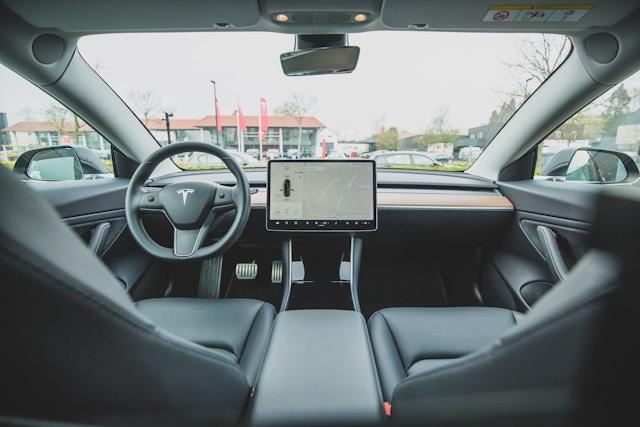A Look at How Technology Is Revolutionizing Car Accident Prevention and Response
Cars have become an essential mode of transportation, and with the rise in ownership, car accidents have also increased significantly. According to the World Health Organization (WHO), around 1.35 million people die each year due to road traffic crashes, making it one of the leading causes of death globally. However, with technological advancements, the automotive industry is slowly revolutionizing car accident prevention and response. This article will explore how technology transforms car accident prevention and response, making roads safer for drivers, passengers, and pedestrians.
Advanced Driver Assistance Systems (ADAS)
Advanced Driver Assistance Systems (ADAS) are technologies designed to automate, adapt, and enhance vehicle systems for safety and improved driving. These systems use sensors, cameras, radar, and artificial intelligence to monitor the vehicle's surroundings and identify potential hazards. Features such as lane departure warning, adaptive cruise control, automatic emergency braking, and blind-spot detection are examples of how ADAS can prevent accidents.
By offering real-time alerts and sometimes taking corrective actions to avoid collisions, ADAS greatly reduces human error, a major cause of traffic accidents. Integrating these systems into modern vehicles is a key step toward safer roads for everyone. For individuals needing legal assistance following a car accident, the Jebaily Law Firm can help navigate the complexities of personal injury claims. Accidents can still happen, but using ADAS has proven to reduce the severity and frequency of accidents.
Connected Cars
Another technological advancement in the automotive industry is the development of connected cars. These vehicles use sensors, GPS, and internet connectivity to communicate with other vehicles, infrastructure, and pedestrians. This enables them to share real-time information about traffic patterns, road conditions, and potential hazards.
Connected cars can also assist in accident response by automatically notifying emergency services in case of an accident or breakdown. This prompt response reduces the time it takes for help to arrive at the scene, potentially saving lives.
Vehicle-to-Everything (V2X) Communication
V2X communication is an extension of connected cars that allows vehicles to communicate with everything around them, including other cars, infrastructure, and pedestrians. This technology enables vehicles to receive information about potential hazards beyond the range of their sensors, such as a vehicle braking suddenly several cars ahead.
V2X communication lets vehicles warn each other about upcoming traffic congestion or roadworks, helping drivers avoid accidents and delays. Furthermore, in case of an accident, V2X can automatically alert emergency services and provide them with real-time data on the exact location and severity of the crash. As this technology continues to evolve, it promises to bring us closer to a future where smart cities and intelligent transport systems work together to create safer, more efficient roadways.
Autonomous Vehicles
Autonomous vehicles, also known as self-driving cars, have been the talk of the town in recent years. These vehicles use a combination of sensors, cameras, and artificial intelligence (AI) to navigate roads actively without human input. While fully autonomous cars are still in the testing phase, they hold immense potential for revolutionizing car accident prevention and response.
Autonomous vehicles monitor their surroundings and make split-second decisions using real-time data, eliminating human error as a cause of accidents. This technology can also reduce traffic congestion by optimizing routes for multiple vehicles and minimizing incident delays. As it advances and gains adoption, it could drastically cut down on accidents on our roads.
Predictive Analytics and Big Data
Technology is revolutionizing car accident prevention and response through predictive analytics and big data. As vehicles connect more, they generate data to identify patterns and predict hazards. For instance, analyzing real-time traffic data can pinpoint high-risk accident areas, enabling authorities to install safety features or increase police presence proactively.
Furthermore, analyzing driver behavior data can help develop tailored training programs to promote safe driving practices among individuals at higher risk of causing accidents. By utilizing big data and predictive analytics, we can take a proactive approach to preventing accidents rather than just reacting after they occur.
Emergency Response Technologies
In the unfortunate event of an accident, prompt and efficient emergency response can save lives. Technology has significantly enhanced emergency response capabilities, making it easier for first responders to arrive at the scene quickly and provide life-saving assistance.
For instance, GPS technology allows for accurate tracking of vehicles involved in an accident, allowing first responders to locate them promptly. Sensors embedded in cars can also detect when an airbag is deployed or if there is a severe impact, triggering automatic calls to emergency services. Moreover, drones equipped with thermal imaging and other sensors can quickly survey accident scenes, providing critical information to emergency response teams before they reach the location.
Technology advances rapidly, constantly evolving and finding new ways to make our lives easier and safer. In the automotive industry, we have seen how technology revolutionizes car accident prevention and response by leveraging connectivity, data analytics, and automation. As these technologies continue to evolve and become more widespread, they hold immense potential to reduce the number of accidents on our roads, ultimately creating a safer driving experience for all.

